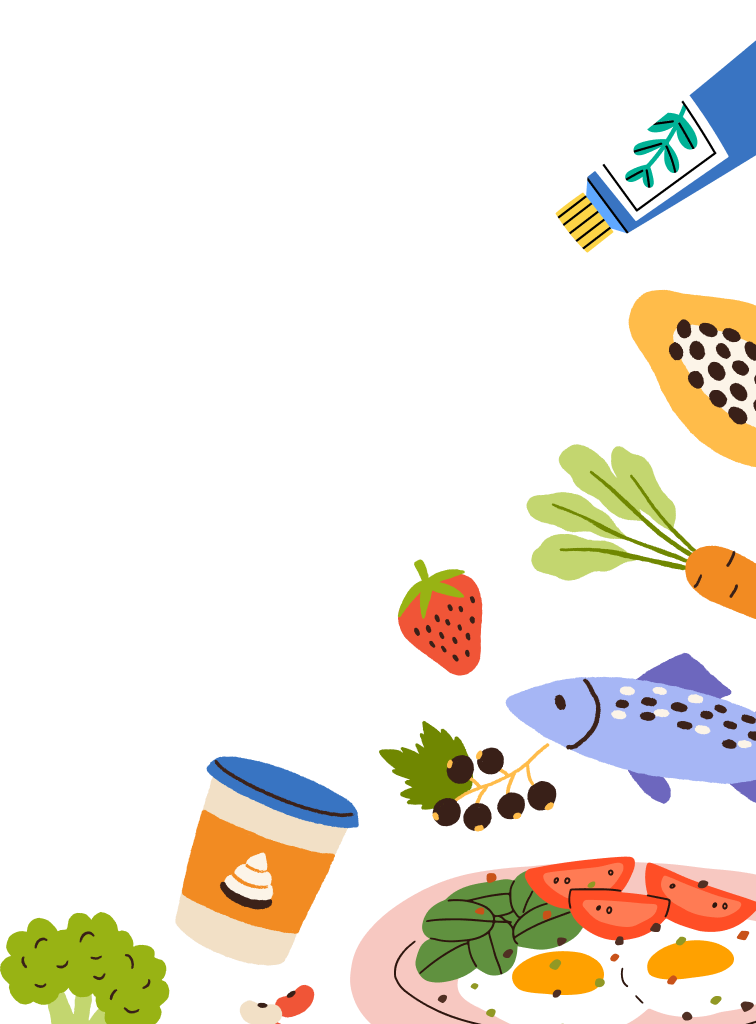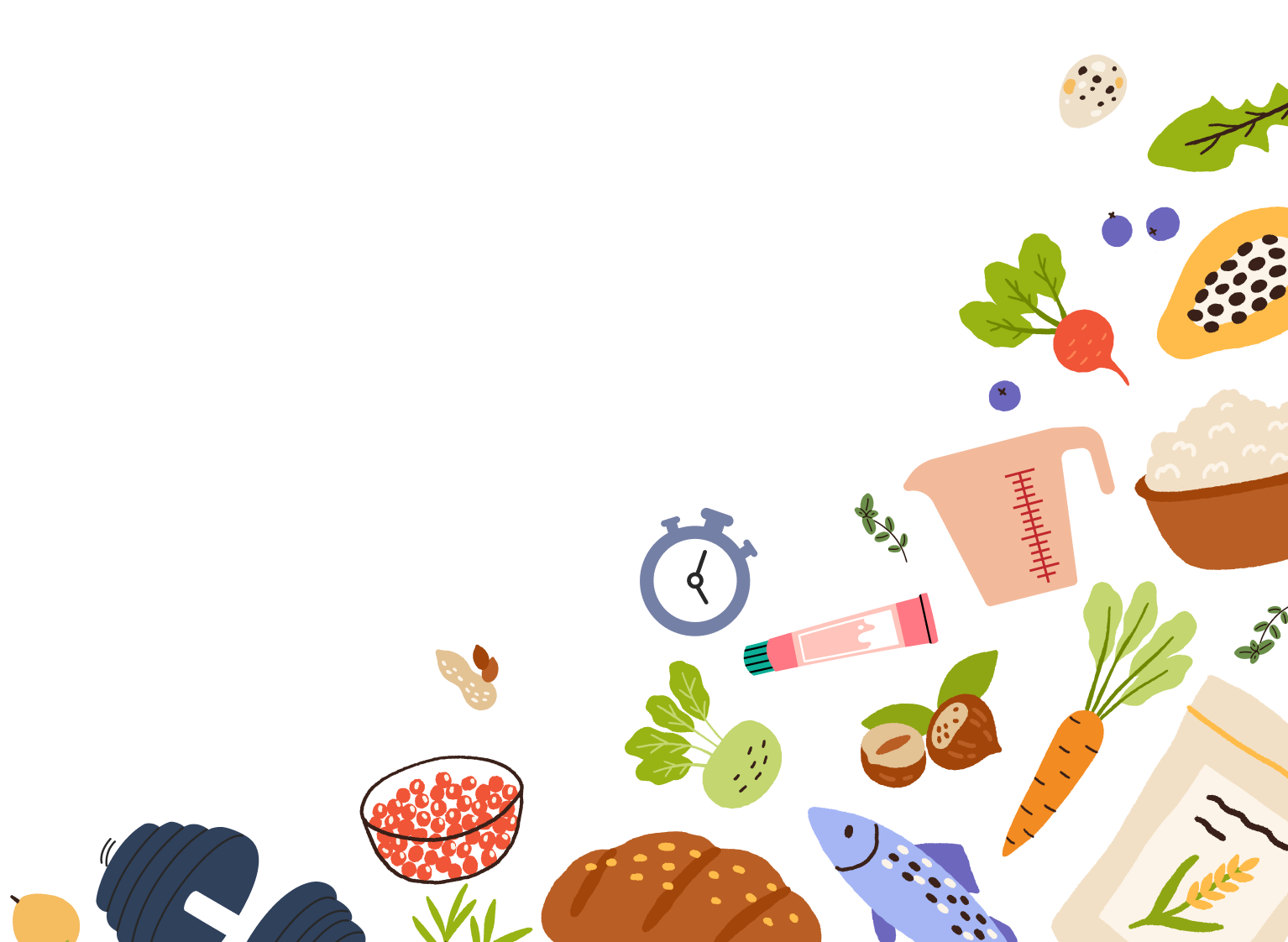Understanding Gluten Sensitivity: Beyond the Basics of Celiac Disease
What Is Non-Celiac Gluten Sensitivity (NCGS)?
Non-Celiac Gluten Sensitivity (NCGS) is an interesting phenomenon and a lot of scientists have not been able to agree on causes or identify clear testing to diagnose it correctly. A 2011 international experts’ consensus defined NCGS as an immune-mediated reaction to gluten. Basically, individuals who have tested negative for celiac and wheat allergy who present with symptoms (see table below) reported a gluten sensitivity can be labeled as having NCGS.
A majority of individuals are self-diagnosed and have self-initiated a gluten-free (GF) diet, with reported improvement among symptoms. Recent data from the National Health and Nutrition Examination Survey (NHANES) revealed that out of all the participants approximately, less than 1% reported following a GF diet without confirmed Celiac Disease (CD).
Intestinal and Extraintestinal Symptoms of NCGS

Extraintestinal symptoms as described above are symptoms that effect or occur in other parts of the body beyond the GI tract. I’m sure you all have met someone who said “when I eat ______, I get headaches or rash/eczema, etc.”. This could be due to other issues within the gut that makes gluten more toxic to the systemic body. Leaky gut or weakening of the gut barrier can lead to cracks making it easier for inflammation to affect all areas of the body. Gut dysbiosis or a bad imbalance of gut bacteria can also lead to more systemic inflammation through the cross-talk of the gut microbes with the brain (aka gut-brain axis).
Additionally, it has been hypothesized that several other conditions could correlate to NCGS but research is lacking. Therefore it is common for people diagnosed with disorders like hashimoto thyroiditis, autism, rheumatologic disorders, fibromyalgia and depression to follow a self-prescribed GF diet or to be recommended to follow this diet as part of a treatment plan.
The Role of Gluten and Wheat in Sensitivities
Researchers have tried to pinpoint why gluten sensitivity has become such a common stance. Some health experts have speculated that there is an increase or change in gluten content among wheat cultivars, others have suggested that it is due to an increase in consumption of processed foods containing vital wheat gluten. Vital wheat gluten is a form of purified gluten with a higher gluten yield making it easier for packaging and storage of processed foods (i.e. frozen pizza, breads, pasta, pastries, baked goods, etc). However, there are no current studies to measure the consumption of vital wheat gluten among consumers and its effects.
Additionally, wheat amylase trypsin inhibitors or ATIs are water-soluble proteins that are a part of wheat. They are not easily digested by enzymes found in the human gut which can lead to the activation of inflammatory markers in the body leading to inflammation.
Diagnosing Gluten Intolerance: Why Testing Matters
Testing for gluten-related disorders involves differentiating between celiac disease, wheat allergy, and non-celiac gluten sensitivity (NCGS). Celiac disease is diagnosed through blood tests for specific antibodies and confirmed with an intestinal biopsy. Wheat allergy is identified via IgE-mediated testing, typically conducted by an allergist. Symptoms of a wheat allergy may include hives, difficulty breathing, and anaphylaxis.
Non-celiac gluten sensitivity, however, lacks definitive tests. NCGS is difficult to diagnose because many symptoms associated with NCGS also present with a multitude of other GI diagnoses like irritable bowel syndrome (IBS) and functional dyspepsia. Diagnosis is generally made through exclusion: ruling out celiac disease and wheat allergy, followed by assessing symptom improvement on a gluten-free diet. Working with a healthcare provider ensures accurate evaluation and appropriate dietary management.
Dietary Strategies for Managing NCGS
If you suspect you have a gluten sensitivity or intolerance talk with a registered dietitian to identify foods that contain gluten. It’s not always black and white and gluten can be sneaking into other foods like canned soups, sauces, seasonings, etc. It’s helpful to learn how to correctly identify a GF food item. It is also important to seek education to ensure you’re eating a well-balanced diet.
While a gluten-free (GF) diet is essential for managing conditions like celiac disease, it's a myth that it automatically leads to weight loss or better health. The key is focusing on balanced nutrition rather than relying on GF processed foods, which can be high in sugar, preservatives, and additives. Instead, aim for a diet rich in whole foods like vegetables, fruits, and a variety of proteins from both plant and animal sources to ensure your body gets all the nutrients it needs.
You may also need additional micronutrients if you have had gastrointestinal symptoms for a while. Approximately 15-23% of people with NCGS are anemic. People are also at risk for folate deficiency as well as vitamin D deficiency. Testing for vitamin and mineral status is key to correcting deficiencies.
If you're still experiencing symptoms after going gluten-free, other food sensitivities, like fructans, might be the culprit. Fructans are a type of FODMAP—a group of fermentable carbohydrates that can be hard for some people to digest. Common symptoms include gas, bloating, diarrhea, or constipation. Interestingly, wheat is high in fructans, which could explain lingering discomfort even on a gluten-free diet. If this sounds familiar, exploring FODMAP sensitivities with a healthcare provider or dietitian could help pinpoint the issue.
Some individuals might be able to tolerate gluten in small quantities. There is some evidence to support that consuming homemade sourdough may be better tolerated among individuals with NCGS.
Tips for Thriving on a Gluten-Free Diet
Here are some additional quick tips when following a gluten-free (GF) diet:
- Look for labels that say gluten-free and check ingredient lists
- Check out this list of gluten-containing Ingredients from the Celiac Disease Foundation
- For yummy recipes check out our extensive collection of gluten-free recipes and The Gluten Free Society
- If eating out, ask for GF options- most menus will specify GF options for you
- When eating at family or friends' homes, let them know you are GF. Most people will be more than happy to accommodate you, especially if they invited you over. Offer to bring something to share with everyone- people are always amazed when I bring GF dishes to share and they taste great!
- If you are traveling, pack yourself some GF snacks for convenience
Please feel free to share your gluten-free tips and tricks in the comments below!
- Barbaro, M. R., Cremon, C., Wrona, D., Fuschi, D., Marasco, G., Stanghellini, V., & Barbara, G. (2020). Non-Celiac gluten sensitivity in the context of functional gastrointestinal disorders. Nutrients, 12(12), 3735. https://doi.org/10.3390/nu12123735
- Celiac disease screening | Celiac Disease Foundation. (n.d.). Celiac Disease Foundation. https://celiac.org/about-celiac-disease/screening-and-diagnosis/screening/
- Choung, R. S., Unalp-Arida, A., Ruhl, C. E., Brantner, T. L., Everhart, J. E., & Murray, J. A. (2017). Less hidden celiac disease but increased gluten avoidance without a diagnosis in the United States. Mayo Clinic Proceedings, 92(1), 30–38. https://doi.org/10.1016/j.mayocp.2016.10.012
- Khan, A., Suarez, M. G., & Murray, J. A. (2020). Nonceliac gluten and wheat sensitivity. Clinical Gastroenterology and Hepatology, 18(9), 1913-1922.e1. https://doi.org/10.1016/j.cgh.2019.04.009
- Losurdo, G., Principi, M., Iannone, A., Amoruso, A., Ierardi, E., Di Leo, A., & Barone, M. (2018). Extra-intestinal manifestations of non-celiac gluten sensitivity: An expanding paradigm. World Journal of Gastroenterology, 24(14), 1521–1530. https://doi.org/10.3748/wjg.v24.i14.1521
- Sapone, A., Bai, J. C., Ciacci, C., Dolinsek, J., Green, P. H., Hadjivassiliou, M., Kaukinen, K., Rostami, K., Sanders, D. S., Schumann, M., Ullrich, R., Villalta, D., Volta, U., Catassi, C., & Fasano, A. (2012). Spectrum of gluten-related disorders: consensus on new nomenclature and classification. BMC Medicine, 10(1). https://doi.org/10.1186/1741-7015-10-13






















Comments
Join The Conversation...